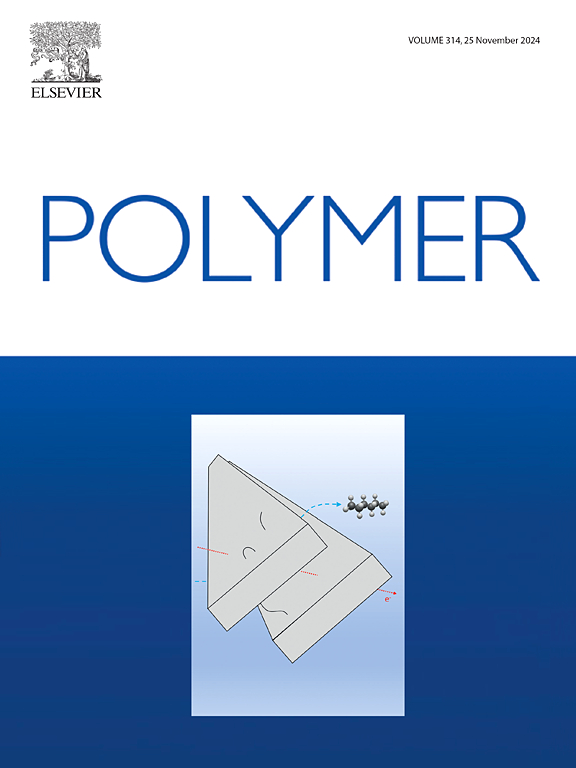Fully physically crosslinked supramolecular hydrogel with high tensile strength, low hysteresis, high adhesivity and frost resistance based on confinement effect
IF 4.1
2区 化学
Q2 POLYMER SCIENCE
引用次数: 0
Abstract
Traditional ionic conductive hydrogel was prepared by chemically crosslinking the polymer chains to form network. However, the chemically crosslinked ionic conductive hydrogel usually showed limited elongation at break and high hysteresis during stretching process. Here, a simple strategy of synthesizing fully physically crosslinked ionic conductive supramolecular hydrogel without chemical crosslinker was purposed. Hydrophilic salt not only act as the ion supplier, but also provide the spatial confinement effect to form the completely physically crosslinked hydrogel. Firstly, CaCl2 was used as the representative salt. The optimal PVA/PAM/CaCl2 ionic conductive hydrogel (PPC), showed excellent tensile performance (2400.3 ± 140.63 %), anti-freezing performance (−28.8 °C), high conductivity (4.8 ± 0.01 S/m), excellent stability at room temperature, low hysteresis, and high transparency. The conductivity of PPC showed no sensitivity to the tensile strain. This innovative combination enables PPC ionic conductive hydrogel to have extraordinary versatility. The flexible all-solid-state supercapacitor assembled with PPC ionic conductive hydrogel as the electrolyte has a high area specific capacitance (136.9 mF/cm2). The prepared supercapacitor can maintain good stability under certain tensile deformation (The capacitance retention rate was 87.7 % when stretched at 200 %). Moreover, other high hydrophilic salts including LiCl, ZnCl2, MgCl2 and AlCl3 were used to prepare ionic conductive PVA/PAM hydrogel to verify the universality of this preparation method.


求助全文
约1分钟内获得全文
求助全文
来源期刊

Polymer
化学-高分子科学
CiteScore
7.90
自引率
8.70%
发文量
959
审稿时长
32 days
期刊介绍:
Polymer is an interdisciplinary journal dedicated to publishing innovative and significant advances in Polymer Physics, Chemistry and Technology. We welcome submissions on polymer hybrids, nanocomposites, characterisation and self-assembly. Polymer also publishes work on the technological application of polymers in energy and optoelectronics.
The main scope is covered but not limited to the following core areas:
Polymer Materials
Nanocomposites and hybrid nanomaterials
Polymer blends, films, fibres, networks and porous materials
Physical Characterization
Characterisation, modelling and simulation* of molecular and materials properties in bulk, solution, and thin films
Polymer Engineering
Advanced multiscale processing methods
Polymer Synthesis, Modification and Self-assembly
Including designer polymer architectures, mechanisms and kinetics, and supramolecular polymerization
Technological Applications
Polymers for energy generation and storage
Polymer membranes for separation technology
Polymers for opto- and microelectronics.
 求助内容:
求助内容: 应助结果提醒方式:
应助结果提醒方式:


